 December 10, 2020 John E. Ross, KD8IDJ, Editor
| ||||||
Launch Window for AMSAT's RadFxSat-2 / Fox-1E CubeSat Opens on December 19 The launch that will carry AMSAT's RadFxSat-2/Fox-1E CubeSat into orbit could come as early as this month. Virgin Orbit has announced that the launch window for its LauncherOne Launch Demo 2 mission, which will carry the AMSAT spacecraft into orbit, opens on December 19. RadFxSat-2 is the fifth and final Fox-1 satellite built by AMSAT. Like RadFxSat/Fox-1B (now AMSAT-OSCAR 91) the RadFxSat-2/Fox-1E CubeSat is a partnership opportunity between The RadFxSat-2 spacecraft bus is built on the Fox-1 series, but Fox-1E features a linear transponder upgrade to replace the standard FM transponder in the Fox-1A - Fox-1D projects. In addition, the uplink and downlink bands are reversed from the previous Fox satellites in a mode V/u (J) configuration using a 2-meter uplink and 70-centimeter downlink. The telemetry downlink will be 435.750 MHz. The inverting linear transponder uplink will be 145.860 MHz - 145.890 MHz. The inverting linear transponder downlink will be 435.760 MHz - 435.790 MHz. The telemetry downlink features a 1,200 bps BPSK channel to carry the Vanderbilt science data, in addition to a 30 kHz wide transponder for amateur radio use. Telemetry and experiment data can be decoded using FoxTelem version 1.09 or later. "Participation in telemetry collection by as many stations in as many parts of the world as possible is essential, as AMSAT Engineering looks for successful startup and indications of the general health and function of the satellite as it begins to acclimate to space," AMSAT said in announcing the possible launch window. "AMSAT will send a commemorative 3D-printed QSL card to the first station capturing telemetry from RadFxSat-2." -- Thanks to AMSAT Nathan Simington Confirmed as Newest FCC Member On a 49 - 46 vote, the US Senate on December 9 confirmed Nathan Simington to be a Commissioner at the FCC. Simington previously served as a senior advisor at the US Department of Commerce. Earlier, he was a legal associate at various law firms, often specializing in finance.
FCC Chairman Ajit Pai has announced that he will step down on January 20, opening a seat for incoming President Joe Biden to appoint a new commissioner to form a new 3 - 2 Democratic majority. Biden then could either designate that new commissioner as chairman, or select one of the two sitting Democrats already on the Commission, Jessica Rosenworcel and Geoffrey Starks. Biden could also designate one of the two sitting Democrats as Acting Chairman to manage the FCC until his new pick has been confirmed by the Senate and sworn in. Until that happens, the FCC will have a 2 - 2 party split. Lee Finkel, KY7M, is New National Contest Journal Editor Lee Finkel, KY7M, of Phoenix, Arizona, will begin his tenure as Editor of National Contest Journal (NCJ) with the magazine's January/February issue. An ARRL publication, NCJ is in its 48th year. Finkel, the 17th Editor, takes over the reins from Scott Wright, KØMD, a noted and regular amateur radio contester, who has helmed NCJ since January 2017.
Licensed as WN9EBT in 1962 in Chicago, Finkel said it wasn't long before he discovered contesting. His participation in the now-defunct ARRL Communications Department (CD) Parties whetted his appetite for contesting. He also discovered DX contests and his "still-favorite CW Sweepstakes." Finkel is a member of the First-Class CW Operators' Club (FOC) and CWops, past Central Arizona DX Association (CADXA) president, and a member of the Arizona Outlaws Contest Club (AOCC). He serves on the Northern California DX Foundation (NCDXF) Board of Directors. He frequently operates the Top Band Club of Arizona remote station, NA7TB, originally built by Milt Jensen, N5IA (SK). Read more. ARRL Podcasts Schedule
The latest edition of Eclectic Tech (Episode 22) describes how some companies are experimenting with gravity as a means of generating electricity. Then, a discussion with The On the Air and Eclectic Tech podcasts are sponsored by Icom. Both podcasts are available on iTunes (iOS) and Stitcher (Android), as well as on Blubrry -- On the Air | Eclectic Tech. ARRL Announces New Book Releases ARRL has released new editions of two books, Antenna Physics, and Storm Spotting and Amateur Radio.
The author is world-recognized antenna technology authority Robert J. Zavrel, Jr., W7SX. This edition provides a guide to grasping a deeper understanding of how antenna systems function. Zavrel clearly communicates the theory and mathematics that form the foundations upon which all antenna designs depend. The second edition of Antenna Physics: An Introduction is available from the ARRL Store or your ARRL Dealer. (ARRL Item no. 1359, ISBN: 978-1-62595-135-9, $34.95 retail, special ARRL Member Price $29.95.) Call 860-594-0355 or, toll-free in the US, 888-277-5289. It will also be available for the Amazon Kindle.
New in this edition are lessons learned and response reports from the 2017 hurricane season, among other things. Co-authors are University of Mississippi Professor of Emergency Management Michael Corey, KI1U, and former Embry Riddle Aeronautical University meteorology professor Victor Morris, AH6WX, with Contributing Editor Rob Macedo, KD1CY. The third edition of Storm Spotting and Amateur Radio is available from the ARRL Store or your ARRL Dealer. ARRL Item no. 1410, ISBN: 978-1-62595-135-9, $22.95 retail, special ARRL Member Price $19.95.) Call 860-594-0355 or, toll-free in the US, 888-277-5289. Also available in Amazon Kindle format. First Solar Image from Hawaii Observatory Shows Sunspot Close-Up The world's largest solar observatory, National Science Foundation (NSF) Daniel K. Inouye Solar Telescope in Hawaii, has released its first image of a sunspot, capturing the phenomenon in striking detail. The image, taken last January, is among the first solar images of the new Solar Cycle 25. The telescope's 4-meter primary mirror will give the best views of the sun from Earth throughout Solar Cycle 25. The image was released along with the first of a series of Inouye-related articles featured in the Solar Physics journal. As radio amateurs know, sunspots and other solar activity can affect HF radio
propagation, among other things, and they are where coronal mass ejections (CMEs) and solar flares originate. The Inouye telescope is in its final stages of construction. "While the start of telescope operations has been slightly delayed due to the impacts of the COVID-19 global pandemic, this image represents an early preview of the unprecedented capabilities that the facility will bring to bear on our understanding of the sun," said David Boboltz, NSF Inouye Solar Telescope Program Director. Solar Cycle 25 is predicted to peak in mid-2025. "With this solar cycle just beginning, we also enter the era of the Inouye Solar Telescope," said Matt Mountain, President of the Association of Universities for Research in Astronomy (AURA), the organization that manages the National Solar Observatory and the Inouye Solar Telescope. "We can now point the world's most advanced solar telescope at the sun to capture and share incredibly detailed images and add to our scientific insights about the sun's activity." During the peak of Solar Cycle 24, 120 sunspots were tracked. Some 115 sunspots are predicted for the peak of Solar Cycle 25. The new image encompasses an area on the sun's surface of some 10,000 miles across -- just a tiny part of the sun, but large enough to fit Earth inside, the Inouye Solar Telescope said in its statement. Read more. -- Thanks to the National Solar Observatory and news media reports ARRL 10-Meter Contest is this Weekend The 2020 ARRL 10-Meter Contest is just ahead, December 12 - 13. Whether you're new to the hobby or a seasoned operator, this event offers something for radio amateurs of all experience levels, from Technician to Amateur Extra.
This contest relies in part on winter E-skip, so propagation may favor higher activity during daylight hours. Be on the lookout for unexpected band openings and favorable propagation. Many operators have noticed improved conditions in recent months. The contest runs from 0000 UTC on December 12 and concludes at 2359 UTC on December 13. Contest logs are due by 2359 UTC on December 20. Complete rules and more information are on the ARRL website. IARU Region 2 Executive Committee Approves Dues Reductions for Member-Societies The International Amateur Radio Union Region 2 (IARU R2) Executive Committee (EC) approved dues reductions and holidays for member-societies in Region 2 (the Americas). The action came as the R2 EC held its fifth and final virtual meeting of the year on November 18 to "Recognizing that the pandemic created many hardships for member-societies and all amateurs in the Americas, the R2 EC approved a 1-year dues reduction for 2021," the EC said. Member-societies with annual dues lower than $150 will get a dues holiday next year, while larger societies will get a 50% dues reduction. The R2 EC said it's able to allow the discounts because 2021 expenses are expected to be lower, "primarily as travel restrictions have moved meeting attendance to being held virtually." The other major item of business was to review the Future Committee's proposal to the IARU Administrative Council (AC). The committee was formed to study and propose how IARU should be structured "to become far more nimble and able to respond quickly to changes in the telecommunications ecosystem," the EC said. Representing Region 2 at the Executive Committee session were Committee Chair Ramón Santoyo, XE1KK, and Secretary George Gorsline, VE3YV. The very popular R2 workshops will be given a reboot in the new year, focusing more on the needs of member-societies as well as on emergency communication. Read more. ARRL Learning Network Webinars Visit the ARRL Learning Network (a members-only benefit) to register, check for upcoming webinars, and view previously recorded sessions. The schedule is subject to change. HF, VHF, and UHF Antennas for SOTA: Brian Betz, W7JET What antenna should you use for activations? We will discuss and show the different types of antennas used by activators, and show the pros and cons of each type. The goal of the presentation is to help activators make a good, informed antenna choice that suits them best. Tuesday, December 15, 2020, 10 AM PST / 1 PM EST (1800 UTC) Learn and Have Fun with Morse Code: Howard Bernstein, WB2UZE, and Jim Crites, W6JIM
Thursday, December 17, 2020, 5 PM PST / 8 PM EST (0100 UTC on Friday, December 18) QSLing in an Online World: Anthony Luscre, K8ZT Learn all about the changing methods of QSLing in amateur radio, including traditional paper QSL cards, and electronic QSLing, such as Logbook of The World and eQSL. Tuesday, January 5, 2021, 10 AM PST / 1 PM EST (1800 UTC) Amateur Radio Logging: Anthony Luscre, K8ZT Discover the advantages of keeping an electronic amateur radio log. Find out why you may need more than one software program for logging-contesting, digital modes, special events, and so on. Learn about using one full-featured logging program to pull everything together, interface with outside databases, handle electronic QSLing, and more. The discussion will include file formats, importing and exporting data between programs, submitting contest logs online, and safe backup of data. Thursday, January 14, 2021, 12:30 PM PST / 3:30 PM EST (2030 UTC) Visit the ARRL Learning Network (a members-only benefit) to register, check on upcoming webinars, and to view previously recorded sessions. The schedule is subject to change. The K7RA Solar Update Tad Cook, K7RA, Seattle, reports: Solar activity quieted this week. The average daily sunspot number declined from 57.6 to 28.9, and average daily solar flux from 108.1 to 91.9. Average daily planetary A index went from 6.4 to 4.4, and average daily middle latitude A index went from 5.6 to 3.1.
The forecast for planetary A index shows 40 and 25 on December 10 - 11; 8 on December 12 - 13; 5 on December 14 - 17; 12, 20, and 8 on December 18 - 20; 5 on December 21 - 22; 8, 10, and 8 on December 23 - 25; 5 on December 26 - January 5; 10 and 8 on January 6 - 7, and 5 on January 8 - 13. A coronal mass ejection on December 7 was expected to spark a geomagnetic storm on December 10 -- 11, which explains why the planetary A index is predicted at 40, 25, 8, and 8 on December 10 -- 13. The ARRL 10-Meter Contest this weekend is much anticipated because of recent increased solar activity. I'm hoping for the best! Sunspot numbers for December 3 - 9 were 40, 38, 42, 25, 35, 11, and 11, with a mean of 28.9. The 10.7-centimeter flux was 102.9, 95.8, 99.9, 90.9, 89.5, 82.4, and 82.1, with a mean of 91.9. Estimated planetary A indices were 3, 2, 5, 6, 3, 5, and 7, with a mean of 4.4. Middle latitude A index was 1, 1, 4, 4, 2, 4, and 6, with a mean of 3.1. A comprehensive K7RA Solar Update is posted Fridays on the ARRL website. For more information concerning radio propagation, visit the ARRL Technical Information Service, read "What the Numbers Mean...," and check out K9LA's Propagation Page. A propagation bulletin archive is available. For customizable propagation charts, visit the VOACAP Online for Ham Radio website. Share your reports and observations. Announcements
Australian Radio Amateurs Denied Access to 60 Meters After considering several options for a 5 MHz amateur allocation, the Australian Communications and Media Authority (ACMA) has come down in favor of national government interests. Following a consultation, ACMA decided not "The ACMA recognizes the high level of interest shown by the amateur community in adding this band and understands there will be disappointment," the agency said. Australia's International Amateur Radio Union (IARU) member-society, the Wireless Institute of Australia (WIA), argued for amateur access to 5351.5 - 5365 kHz as a compromise. The WIA pointed out that more than 80 countries have been granted access to the band.
In the US, ARRL proposed amateur access to a new, contiguous secondary band at 5 MHz in a 2017 Petition for Rule Making. ARRL also asked the FCC to retain shared access to four of the current five 60-meter channels (one would be within the new band) as well as current operating rules, including the 100 W PEP effective radiated power (ERP) limit. The federal government is the primary user of the 5 MHz spectrum in the US. Read more. -- Thanks to The 5 MHz Newsletter Editor Paul Gaskell, G4MWO, for some information. Transatlantic Tests Mark 99th Anniversary On December 11, 1921, radio history was made when a signal from amateur station 1BCG in Greenwich, Connecticut, was heard in Ardrossan, Scotland, marking the first successful transatlantic radio transmission using shortwave frequencies. Between 1921 and 1924, radio amateurs experimented with transmitting across the Atlantic. Sponsored by ARRL, the Transatlantic Tests aimed to prove that shorter wavelength frequencies could propagate long distances using transmitters running less than 1 kW. The initial run of the Transatlantic Tests was a failure. For the second Transatlantic Tests, ARRL In one of those historical coincidences, during his voyage to England, Godley met Harold Beverage, who convinced him to use a specially designed, highly sensitive, directional 1,300-foot antenna, still referred to as the Beverage antenna. During a pre-event dinner arranged by his British hosts, Godley also met wireless pioneer Guglielmo Marconi. Over the course of the test period, more than two dozen stations were heard between 230 and 235 meters, roughly 1.3 MHz in what is now the AM broadcast band. Some utilized spark-gap transmitters, others employed vacuum-tube CW transmitters. The one heard most consistently was the 1BCG CW transmitter operated by six members of the Radio Club Of America -- Ernest Amy, 2VK; Edwin Armstrong; George Burghard, 2SS; Minton Cronkhite, 1BCG; John Grinan, NJ2PZ, and Walker Inman, 2BGM. From 1BCG, they transmitted their message at 2152 UTC (then GMT) on December 11, 1921: "No.1 de 1BCG. W-12 [Words 12], New York, Date 11/12-21, To Paul Godley, Ardrossan, Scotland, Hearty Congratulations, Burghard, Inman, Grinan, Armstrong, Amy, Cronkhite" Reporting on the accomplishment, ARRL Secretary Kenneth B. Warner, 1EH, declared, "Excelsior!" Read more. -- Thanks to Clark Burgard, N1BCG, and Mike Marinaro, WN1M In Brief...
Just Ahead in Radiosport
Upcoming ARRL Section, State, and Division Conventions Note: Many conventions and hamfests have been canceled or postponed due to the coronavirus pandemic. Check the calendar of canceled events on the ARRL website.
Find conventions and hamfests in your area.
ARRL -- Your One-Stop Resource for . .
Subscribe to...
Free of charge to ARRL members...
| ||||||
.png) Vanderbilt University and AMSAT and will carry a similar radiation effects experiment, studying new FinFET technology.
Vanderbilt University and AMSAT and will carry a similar radiation effects experiment, studying new FinFET technology.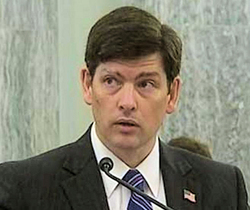 Upon being sworn in, he will take the seat of Commissioner Michael O'Rielly, whose renomination was pulled by President Donald Trump last summer, shortly before it was to go to the Senate floor.
Upon being sworn in, he will take the seat of Commissioner Michael O'Rielly, whose renomination was pulled by President Donald Trump last summer, shortly before it was to go to the Senate floor.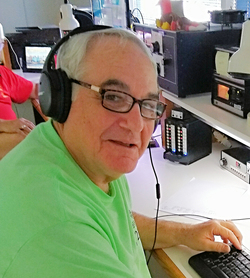 "My hope is that I will be able to build on Scott Wright's hard work and that of my other predecessors, the very supportive ARRL staff, and the impressive cadre of columnists and other writers, to continue making NCJ a valuable resource for the contesting community," Finkel said. Most contesters will recognize his call sign from his regular contest activity. He's also been a contributing writer for NCJ and other publications. A retired lawyer, mediator, arbitrator, and educator, he and his family have lived in Arizona since 1981.
"My hope is that I will be able to build on Scott Wright's hard work and that of my other predecessors, the very supportive ARRL staff, and the impressive cadre of columnists and other writers, to continue making NCJ a valuable resource for the contesting community," Finkel said. Most contesters will recognize his call sign from his regular contest activity. He's also been a contributing writer for NCJ and other publications. A retired lawyer, mediator, arbitrator, and educator, he and his family have lived in Arizona since 1981.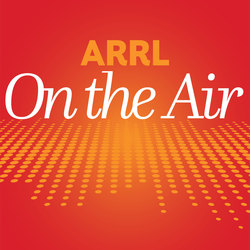 The latest episode of the On the Air podcast (Episode 12) will feature a discussion about storm spotting and SKYWARN, with Mike Corey, KI1U, co-author of
The latest episode of the On the Air podcast (Episode 12) will feature a discussion about storm spotting and SKYWARN, with Mike Corey, KI1U, co-author of 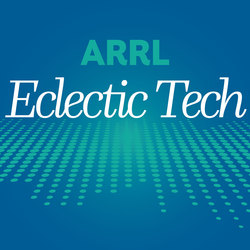 ARRL Assistant Laboratory Manager Bob Allison, WB1GCM, about how modern transceivers compare to vintage models.
ARRL Assistant Laboratory Manager Bob Allison, WB1GCM, about how modern transceivers compare to vintage models.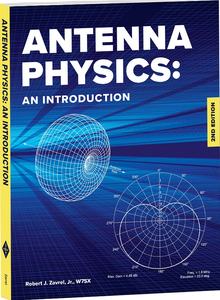 The second edition of
The second edition of 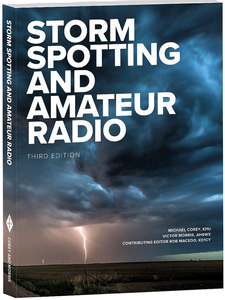 The third edition of
The third edition of 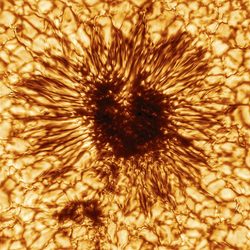
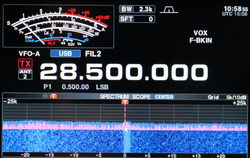 If you're a recently licensed ham or a Technician-class licensee who wants to get their first taste of HF contesting, remember that Technicians have CW privileges from 28.0 to 28.3 MHz and SSB phone privileges from 28.3 to 28.5 MHz.
If you're a recently licensed ham or a Technician-class licensee who wants to get their first taste of HF contesting, remember that Technicians have CW privileges from 28.0 to 28.3 MHz and SSB phone privileges from 28.3 to 28.5 MHz..JPG) complete outstanding business from its three October sessions and to approve the 2021 operating budget.
complete outstanding business from its three October sessions and to approve the 2021 operating budget.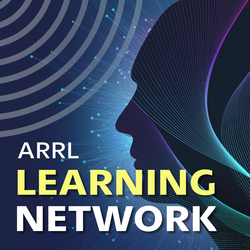 Morse code, or "CW," is a popular ham radio operating mode. Learning CW does not have to be an arduous or lonely experience. Learn, practice, and enjoy CW with the methods used by the Long Island CW Club.
Morse code, or "CW," is a popular ham radio operating mode. Learning CW does not have to be an arduous or lonely experience. Learn, practice, and enjoy CW with the methods used by the Long Island CW Club.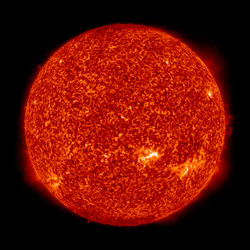 Predicted solar flux for the next month is 82 on December 10 - 11; 84 on December 12 - 13; 80 on December 14 - 16; 82 and 88 on December 17 - 18; 92 on December 19 - 24; 94 on December 25 - 28; 96, 94, and 92 on December 29 - 31; 90 on January 1 - 4; 88 on January 5 - 7, and 86 on January 8 - 11.
Predicted solar flux for the next month is 82 on December 10 - 11; 84 on December 12 - 13; 80 on December 14 - 16; 82 and 88 on December 17 - 18; 92 on December 19 - 24; 94 on December 25 - 28; 96, 94, and 92 on December 29 - 31; 90 on January 1 - 4; 88 on January 5 - 7, and 86 on January 8 - 11..jpg) The Radio Society of Great Britain (RSGB) has announced a Get on the air for Christmas (
The Radio Society of Great Britain (RSGB) has announced a Get on the air for Christmas (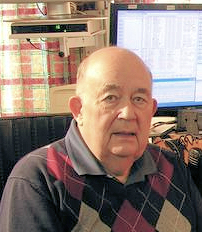 ON5AU has created a
ON5AU has created a 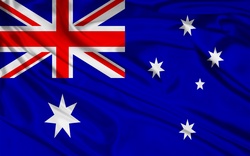 to permit ham operation on the 5351.5 - 5366.5 kHz band. The 15 kHz-wide band was allocated to the amateur service on a secondary basis in 2017, ACMA says, "unresolved sharing issues" have prevented ham radio use of the band, used by more than 500 other licensed services as well as by the Australian military."
to permit ham operation on the 5351.5 - 5366.5 kHz band. The 15 kHz-wide band was allocated to the amateur service on a secondary basis in 2017, ACMA says, "unresolved sharing issues" have prevented ham radio use of the band, used by more than 500 other licensed services as well as by the Australian military."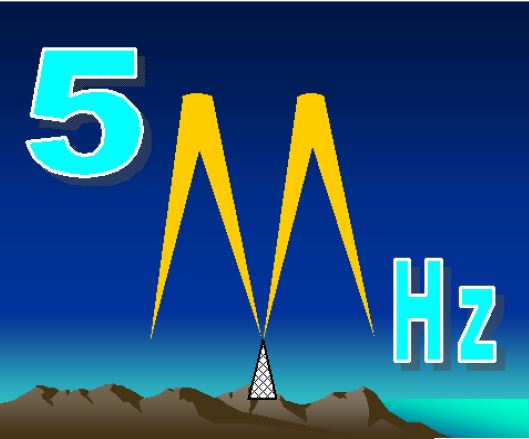 Radio amateurs in New Zealand lost access to 60 meters in late October. Use of this band by radio amateurs there was provisional, allowing hams to use two frequencies in the band -- 5353.0 kHz and 5362.0 kHz -- as part of a trial.
Radio amateurs in New Zealand lost access to 60 meters in late October. Use of this band by radio amateurs there was provisional, allowing hams to use two frequencies in the band -- 5353.0 kHz and 5362.0 kHz -- as part of a trial.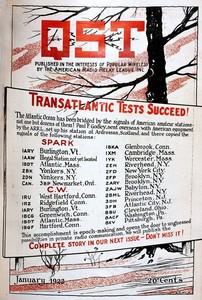 dispatched receiver designer Paul Godley, 2ZE, considered one of the best of operators the day, to Europe to listen for participating stations. His nine-tube receiver employed the latest superheterodyne technology.
dispatched receiver designer Paul Godley, 2ZE, considered one of the best of operators the day, to Europe to listen for participating stations. His nine-tube receiver employed the latest superheterodyne technology.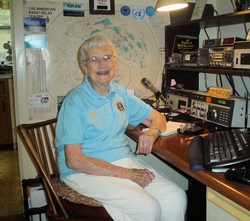 Tennessee Centenarian Receives ARRL Centurion Award Elizabeth "Betty" Oakberg, N4LZL, of Oak Ridge, Tennessee, recently received the ARRL Centurion Award. Now 102, Oakberg started in radio as a shortwave listener (SWL) and earned her Novice-class license in the late 1970s, when she neared retirement as an elementary school teacher. She subsequently upgraded to her Amateur Extra-class license. During her more active hamming years, she earned Worked All States (WAS), made the DXCC Honor Roll, received the Austrian OE-100 Award, and contacted the Mir space station, among other achievements. A longtime member of the Oak Ridge Amateur Radio Club, she served as an officer for several years and regularly participated in ARRL Field Day. She was also a frequent check-in with the American Foreign Service Net. Oakberg received the ARRL Centurion Award plaque in November, and once pandemic restrictions ease, a formal presentation will be arranged. -- Thanks to John Oakberg, NK4N
Tennessee Centenarian Receives ARRL Centurion Award Elizabeth "Betty" Oakberg, N4LZL, of Oak Ridge, Tennessee, recently received the ARRL Centurion Award. Now 102, Oakberg started in radio as a shortwave listener (SWL) and earned her Novice-class license in the late 1970s, when she neared retirement as an elementary school teacher. She subsequently upgraded to her Amateur Extra-class license. During her more active hamming years, she earned Worked All States (WAS), made the DXCC Honor Roll, received the Austrian OE-100 Award, and contacted the Mir space station, among other achievements. A longtime member of the Oak Ridge Amateur Radio Club, she served as an officer for several years and regularly participated in ARRL Field Day. She was also a frequent check-in with the American Foreign Service Net. Oakberg received the ARRL Centurion Award plaque in November, and once pandemic restrictions ease, a formal presentation will be arranged. -- Thanks to John Oakberg, NK4N.png) Neutron-1 CubeSat Signals Received Following the 3U
Neutron-1 CubeSat Signals Received Following the 3U .jpg)








